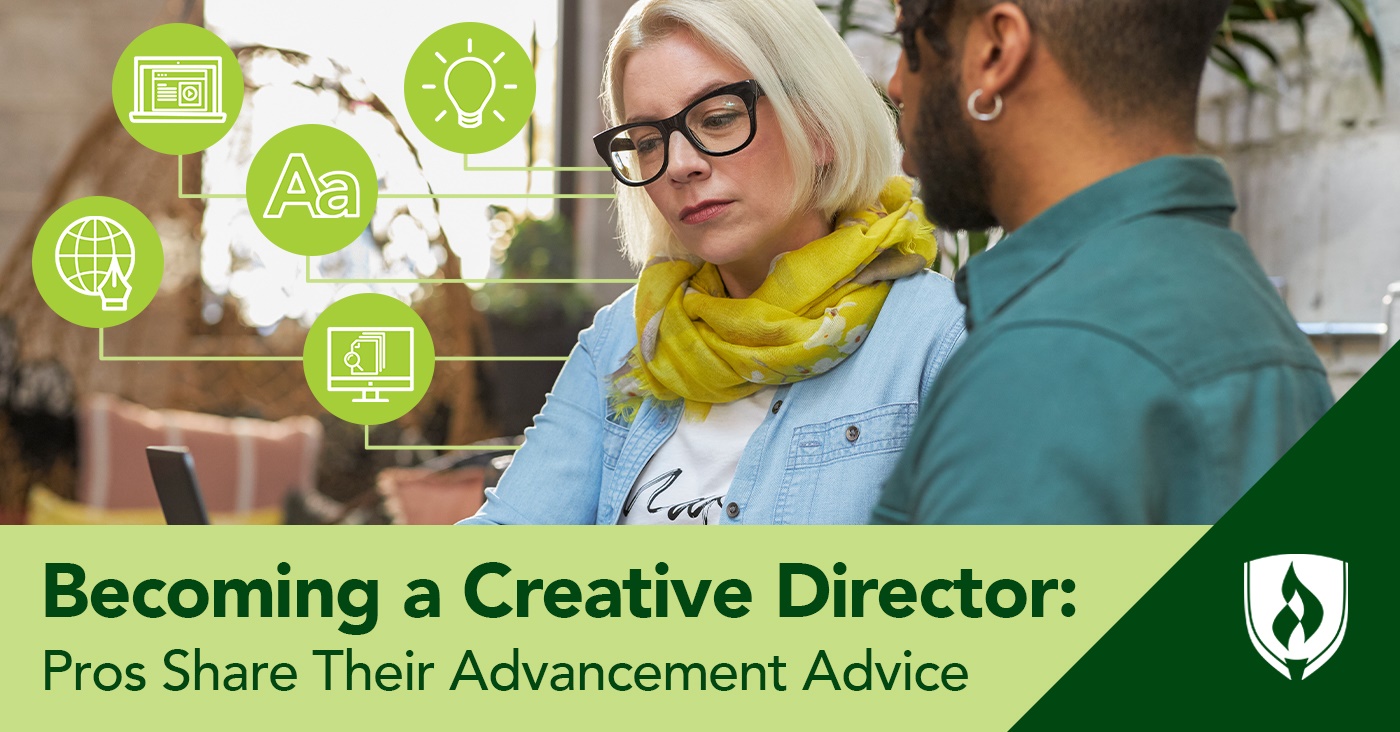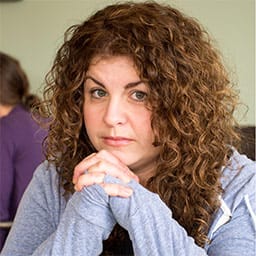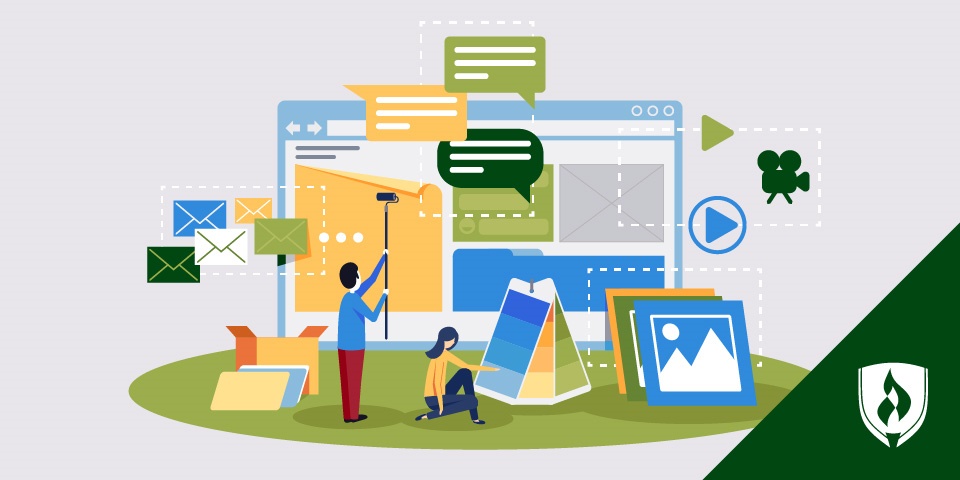
If you’re interested in the field of design, you’ve maybe heard of the role of creative director as a potential job title to pursue as you grow in your career. While you might be closer to just starting out at the moment, it’s only natural to wonder about career advancement and where you could potentially end up further down the line.
These professionals use their design skills and leadership abilities to chart a creative course for a wide variety of projects—and guide the teams of people responsible for executing it. Does this sound like it could be in the cards for you? While having the goal of someday becoming a creative director is a great starting point, you still need to know more about what they do and what you can do to get there. In this article, you’ll learn more about what creative directors are responsible for and what it takes to become one.
What does a creative director do?
Creative directors manage teams of other creative professionals who create print, digital and video assets for marketing campaigns and advertising initiatives. They oversee the work of graphic designers, copywriters and web developers to ensure the client is happy with the end result, making sure to enforce brand standards and style guidelines, all while keeping up on industry trends and technological developments.
“Imagine an orchestra,” says Hazel Pan, copywriter and marketing strategist. “And you are the conductor. You design, direct and manage your team’s campaigns.”
Basically, the creative director role is a creative jack-of-all-trades who balances design, text and innovation when it comes to marketing, advertising and customer engagement.
“It’s not only about coming up with new products and services for the company,” says Erwin Caniba, cofounder of VPNThrive. “It’s also about coming up with fresh ways and ideas to make existing products and services more appealing to customers.”
Understanding and managing others who do this vital creative work is also a key concern for creative directors.
“You must be a capable leader,” says Bram Jansen, chief editor at VPNAlert. “Someone who recognizes and values the contributions of their subordinates. You can’t accomplish it all by yourself.
How do you become a creative director?
Typically, creative directors begin their careers in specialized, entry-level roles: graphic designers, copywriters, marketing strategists, web developers. As they work with a team of other creatives and gain experience on a variety of marketing campaigns, they are able to see the bigger picture in producing quality work that clients will come back for again and again.
The ability to meet quick deadlines, absorb a client’s brand standards and add enhancements to their marketing strategies is very important in this rule.
“It’s crucial for a creative director to get to know their team and establish the proper environment for them to work in,” says Alex Claro, VPN analyst at CreditDonkey.
This job also requires you to wear many hats, dabble in many specialized areas and have a working knowledge of the business concerns of their clients.
“You will need marketing and business knowledge so you’ll know how to execute a campaign,” says Pan. “You’ll also need marketing analytics skills so you’ll know how to track and analyze results.”
There isn’t a set amount of time you’ll need to put in before moving into a creative director role. The ability to advance will vary with the size of the company, the type of marketing campaigns executed and the number of clients served—and that’s just a few of the potential variables.
Recommendations for aspiring creative directors
Staying up on industry developments and emerging concerns among your client’s customer base is also critical, as is a wide-view perspective on human behavior.
“You must keep your ear to the ground,” says Jansen. “What’s the big thing in today’s culture? What are you going to with that? Another important consideration is how and what the culture perceives when exposed to various items and how they value them.”
Having close contact with all team members and knowing the type of work they are assigned helps keep a creative director focused on all the important pieces that go into a successful marketing campaign. Claro believes this kind of cross-team work is a good thing for those wanting to become creative directors.
“You should also make sure that your job does not need you to be a one-trick pony,” Claro explains. “While specialization in a certain subject or issue is always a plus, certain roles, particularly agency employment, need creative directors to be well versed in a wide range of sectors and themes. Be a sponge and soak up as much knowledge as possible.”
Regardless of the type of role you begin in, Pan also echoes Jansen regarding getting experience with a variety of creative campaigns.
“Master the fundamentals and learn first principles, but never stop learning new channels as you go,” Pan suggests. “Technologies, channels and zeitgeist change.”
Set the foundation for a creative career
Could you be adding “creative director” to your resume in the future? You’ll first need to walk before you run—and a Graphic Design degree may be your first step. Our article “What Can You Do with a Graphic Design Degree: Exploring Your Options” can provide you a clear view of the potential road ahead as a design professional.




